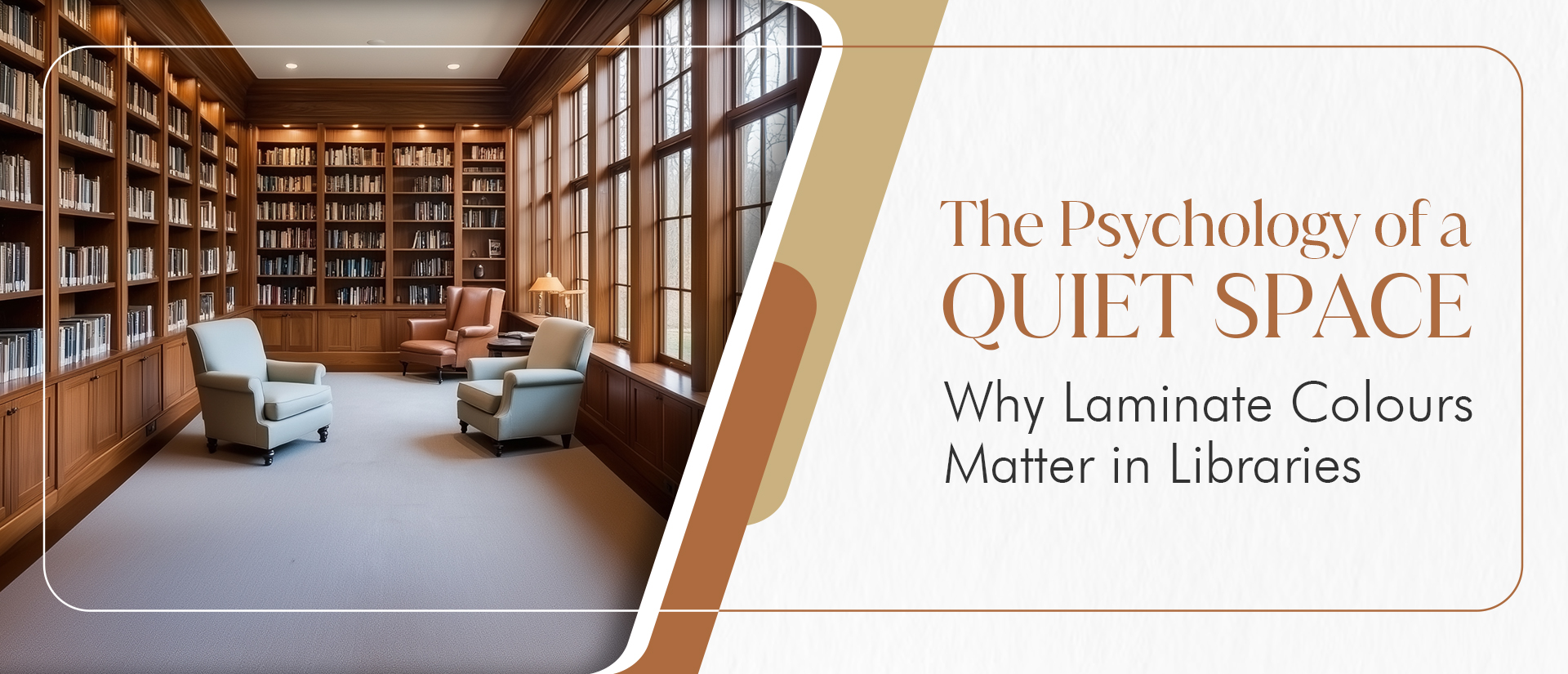Libraries are quiet retreats that help with focus, emotion control, and cognitive recovery in a world full of distractions. Such settings are silent for a reason. It's a place of intentional design where colour and environmental psychology come together to create mood, productivity, and levels of stress. Among the key design elements is choosing laminate surfaces that impact the sensory context.
At Manilam Laminates, we think every design decision is a constituent of the mental and emotional wellness of individuals occupying that space. That's why our best-quality laminates are designed to enhance spaces where focus is paramount along with being durable and beautiful.
Why Colour Matters in Study Spaces
Colour affects mood and relaxation by influencing the autonomic nervous system of the brain. Since vivid hues like red are associated with the fight-or-flight response, they are inappropriate for extended periods of focus or high levels of stress and alertness.
Muted, earthy colours like ash, beige, and sage activate the parasympathetic nervous system, which reduces cognitive load and encourages relaxation. This is why it is advantageous to redesign libraries using Manilam's Vogue collection because it can increase working memory and lessen mental exhaustion.
Design That Enables Concentration: Texture & Tone
Texture in library interior design is equally important as colour. High-gloss finishes that are eye-straining, glaring, and scratchy are contrasted with soft matte laminates that lessen glare and give the impression of visual comfort.
For such impressions, opt for Manilam's high-pressure laminates because these are renowned for durability and elegant textures. Fitted across reading tables or partition walls, the finishes not only resist intense use but also offer a sensory setting that leaves students calm and free of distractions.
Sustainable and Low-Maintenance by Design
Materials for use within libraries and other institutional settings should be low-maintenance, long-lasting, and sustainable. Our best-quality laminates satisfy all of these requirements by being resistant to moisture, staining, and created using sustainable processes. They are perfect for busy, quiet spaces since they are low-maintenance and long-lasting in their beauty. In addition to designing gorgeous-looking spaces, designers opt for Manilam Laminates to create a sustainable and durable solution in functionality.
Why Designers Have Faith in Manilam for Learning Environments
From universities and schools to public libraries, architects and designers have faith in Manilam Laminates for more than mere surface aesthetic. Our collections, including the Vogue Collection 4.0, combine:
-
High-performing laminates with enduring durability
-
Richly coloured, dense earth and neutral hues
-
Wear and impact resistance, perfect for high-traffic, high-use environments like libraries
Whether you’re outfitting a quiet corner in a school or designing an entire academic library, our high-pressure laminates bring both form and function together in harmony.
Create a Sanctuary for Learning
In a space where silence howls at decibels, every design element is busy with the intention of causing focus, serenity, and simplicity. In addition to adding beauty, the colours and textures you use on walls, tables, and shelves also have psychological effects that affect people's thoughts, feelings, and behaviour.
With Manilam's best-quality laminates, you're not just selecting a surface; you're building the backdrop for deep concentration, unrelenting study, and indelible impressions. From our soothing neutrals to timeless woodgrains in Vogue Collection 4.0, we help transform libraries into sanctuaries of concentration and imagination.
Want to build a room where minds can actually concentrate?
Explore Manilam Laminates today and bring quiet brilliance to every corner.
FAQs
Q. What are cool colours for emotions?
Ans. Light blues and greens are the colours of emotions. These bring peace and harmony to areas that are dominated by modern design.
Q. What is the psychological impact of colour in design?
Ans. The psychological effects of colour can subtly influence attitudes; for example, food may taste better or worse depending on its colour. The right colour can even boost the power of medication and placebos; red or yellow are usually applied to stimulants, but blue for sedatives and sleep.
Q. What colour psychology is used for creativity?
Ans. According to a number of studies, blue or gentle colours foster ambience, which improves creativity, formatting, and thought processes.






